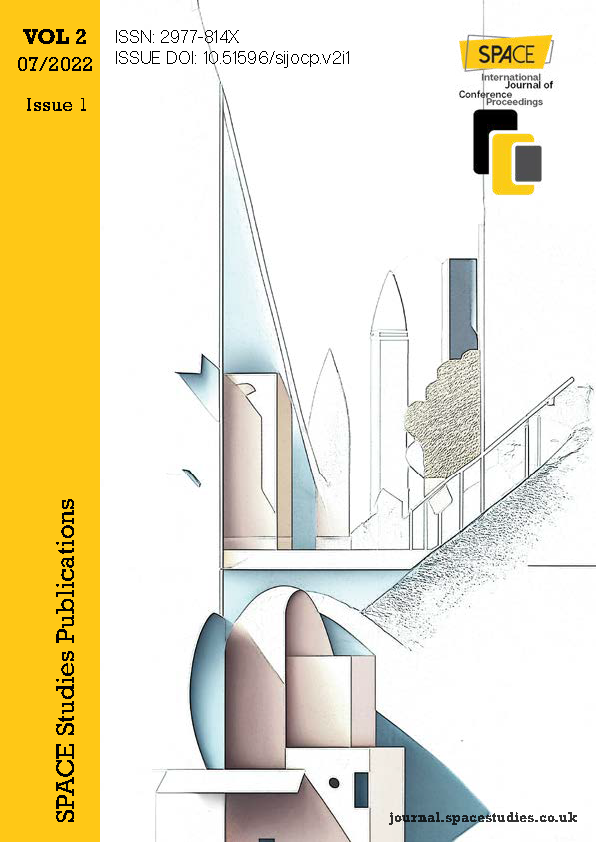Participatory Approaches to Communal Gathering Design in Homeless Shelter Villages
DOI:
https://doi.org/10.51596/sijocp.v2i1.38Keywords:
communal gathering, homelessness, low-cost, participatory designAbstract
People experience each other and their shared environments through communal spaces. Often, these shared spaces allow residents of neighbourhoods to affiliate a sense of identity and placemaking and foster socio-economic relations. Homelessness, exacerbated by growing socio-economic inequality in cities, manifests itself in external, public, and frequently hostile urban settings. Although architectural investigations seek solutions to provide basic shelter to persons experiencing displacement, their community spaces often remain largely overlooked. This paper underscores the need for more effective community spaces, in addition to basic shelter, in homeless re-housing projects. It investigates social and structural paradigms to create spaces of opportunity that provide a safe space for community interaction, fostering social relations and even employment opportunities while recognising social challenges such as reticence among shelter residents due to mistrust, fear of theft and more. Beyond social challenges, the research investigates some challenges related to the employment of more inclusive and participatory design processes and the development of low-cost, adaptable and durable architectural solutions that are safe and effective but do not require a building permit. Working along with a non-profit housing organisation in Seattle, Washington, a team of university students and instructors revealed through this study a necessity for multifaceted approaches towards the design and construction of communal spaces that can be built inexpensively and within code requirements on a variety of sites with more significant community member input. The outcome of this research is a catalogue of shelter systems - a ‘recipe book’ called “Recipes of Hope”- with tectonic elements - called ‘ingredients’- categorised as structure or skin that can be combined by non-profit developers, builders and residents to create safe, sociable, and structurally efficient communal gathering places, that emanate an environment of joy and hope.
References
Campagnaro, C., & Di Prima, N. (2018). Empowering Actions the Participatory Renovations of a Shelter. IntAR Interventions Adaptive Reuse, 9(1), 9.
Datta, A. (2005). “ Homed” in Arizona: The architecture of emergency shelters. Urban Geography, 26(6), 536-557.
Kellett, P., & Moore, J. (2003). Routes to home: homelessness and home-making in contrasting societies. Habitat International, 27(1), 123-141.
Liebow, E. (1993). Tell them who I am. Simon and Schuster.
Lin, J., & Mele, C. (Eds.). (2012). The urban sociology reader. Routledge.
Luttrell, C., Quiroz, S., Scrutton, C., & Bird, K. (2009). Understanding and operationalising empowerment (pp. 1-16). London: Overseas Development Institute.
Rose, J. (2019). Unsheltered homelessness in urban parks: Perspectives on environment, health, and justice in Salt Lake City, Utah. Environmental Justice, 12(1), 12-16.
Skinner, S., & Rankin, S. (2016). Shut Out: How Barriers Often Prevent Meaningful Access to Emergency Shelter. Available at SSRN 2776421.
Veness, A. R. (1993). Neither homed nor homeless: Contested definitions and the personal worlds of the poor. Political Geography, 12(4), 319-340.
Web References
City Mayors: Homelessness in US cities. http://www.citymayors.com/society/usa-cities-homelessness.html (Last Access: 11.11.2021)
https://kingcounty.gov/elected/executive/constantine/news/release/2020/July/01-homeless-count.aspx (Last Access: 11.11.2021)
U.S. Department of Housing and Urban Development Office of Community Planning and Development, A Guide to Counting Unsheltered Homeless People, Retrieved from https://files.hudexchange.info/resources/documents/counting_unsheltered.pdf (Last Access: 11.11.2021)
Low Income Housing Institute, History of LIHI, https://lihi.org/history/ (Last Access: 11.11.2021)
Urban Rest Stop, https://urbanreststop.org (Last Access: 11.11.2021)
https://lihi.org/tiny-houses/ (Last Access: 11.11.2021)
empowerment-booklet.pdf Retrieved from https://www.un.org/esa/socdev/ngo/outreachmaterials/empowerment-booklet.pdf (Last Access: 11.11.2021)
World Community Empowerment Manual, Retrieved from https://reliefweb.int/sites/reliefweb.int/files/resources/2011.GLO_WWGVC Community Empowerment Manual.pdf (Last Access: 11.11.2021)
Global Shelter Cluster, Shelter Projects 8th Edition. Retrieved from https://shelterprojects.org/shelterprojects8/ShelterProjects8-2021-web.pdf
Published
How to Cite
Issue
Section
Categories
License
Copyright (c) 2022 Saba Fatima, Robert Corser, Jack Hunter

This work is licensed under a Creative Commons Attribution 4.0 International License.













